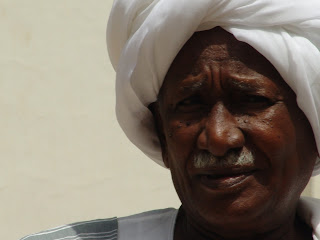 |
| Joseph Garang |
The Southern Sudanese face the ballot box with two options, unity or secession. In the SPLM’s qualification the first equates with second class citizenship in the NCP’s Sudan, and the second equates with the promised liberation. CPAese aside I guess the argument for a separate Southern Sudan boils down to Aggrey Jaden’s uncompromising formulation in his speech to the 1965 Round Table Conference in Khartoum. According to Jaden, “Sudan falls sharply into two distinct areas, both in geographical area, ethnic group and cultural systems. The Northern Sudan is occupied by a hybrid Arab race who are united by their common language, common culture and common religion, and they look to the Arab world for their cultural and political inspirations. For this reason, the Sudan became a member of the Arab league soon after independence. The people of the Southern Sudan, on the other hand, belong to the African ethnic group of East Africa. They do not only differ from the hybrid race in origin, arrangements and basic systems but in all conceivable purposes. With this real division, there are in fact two Sudans and the most important thing is that there can never be a basis of unity between the two. There is nothing in common between the various sections of the community: no body of shared beliefs, no identity of interests, no local signs of unity and, above all, the Sudan has failed to compose a single community.”
Aggrey Jaden’s argument stands today largely uncontested, if not reaffirmed by the breakdown of the Addis Ababa accord and the eruption of the second civil war in 1983, the rise of the National Islamic Front to power in Khartoum in 1989 and the ensuing racial/religious polarisation he so bluntly claimed as true.
A compatriot of Jaden, Joseph Garang, considered the North-South contradiction to be secondary to a primary contradiction between the Sudanese, or all Africans, and imperialism. In a speech titled ‘Economics and Regional Autonomy’ in 1970 Garang argued that the accentuation of uneven development between the North and the South resulted in this secondary contradiction “between the Southern people on the one hand and the Northern exploiting classes on the other... namely the feudal landlords and the bourgeoisie and their intellectuals and bureaucratic representatives in the state apparatus. The exploiting classes here continued certain features of British policy, including the poll tax, cattle fines, forced labour, inequality of wages, restriction of education. More importantly they attempted to impose the Arabic language and Islam (or bourgeoisie culture) upon the Southern people”. Garang vehemently opposed Jaden’s postulate, in his words ‘the racial thesis’. In his ‘the Dilemma of the Southern Intellectual’ (1971) Garang imagined the horizon of Southern liberation in the following terms: “the task of our democrats is to eliminate the North-South contradictions in the interest of the advance of the whole of the Sudanese people toward progress, democracy and peace. Such elimination is impossible without an alliance between the Southern national groupings and the working class, led by its political organisation, the Communist Party”. Garang, a member of the Communist Party’s Central Committee at the time, was executed along with fellow CC comrades, Abd-el-Khalig Mahjub, and el-Shafie Ahmed el-Sheikh in the tragic aftermath of the 19 July 1971 coup attempt against Numayri’s junta.
While Aggrey Jaden’s ‘racial thesis’ thrives today in the guise of ‘identity politics’ Joseph Garang’s anti-imperialism never recovered, not in the North and not in the South. The secondary contradiction, dear Jo, has been paradoxically resolved at the expense of the primary. How you may ask? A division of spoils between the Northern bourgeoisie you fought against and the Southern bourgeoisie you did not live to witness. And it is not ‘racial’, Jo, that is for public consumption.




No comments:
Post a Comment